The Bosnia and barrier stitches are easy to sew, similar in appearance, and share aliases. The barrier stitch is basically the French version of the Bosnia. The Bosnia stitch is known by several additional names—Bosnian, Bosnian filling, barrier, fence, French fence, Yugoslav border, and zigzag Holbein stitch. It originated in Bosnia-Herzegovina, a present-day southern European country, located on the Balkan Peninsula, which gained independence in 1992. Bosnia was formerly part of the central region of Yugoslavia.
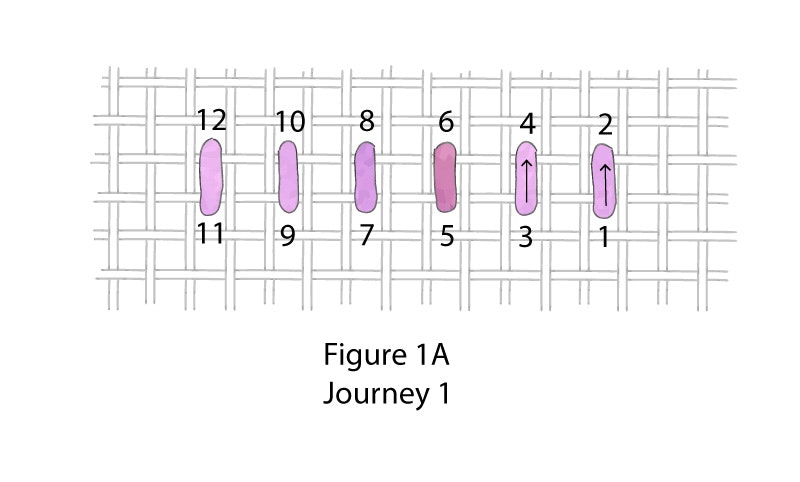
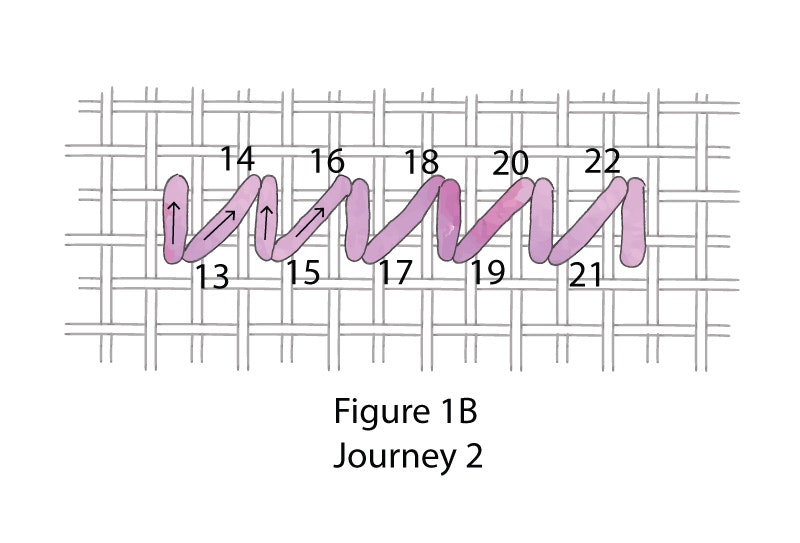
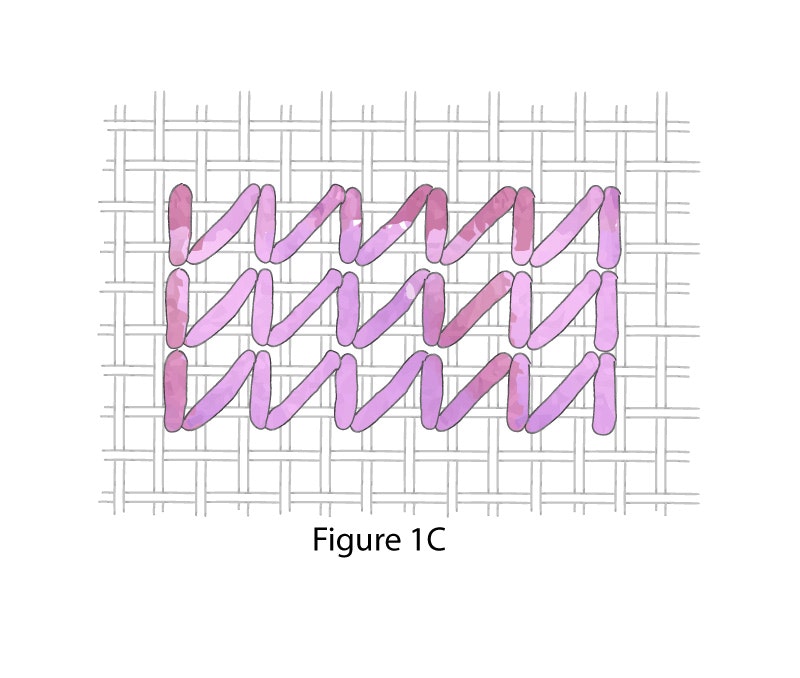
The Bosnia is a stitch commonly requiring two journeys or passes. The first journey is a row of upright straight stitches worked from right to left, usually over two (Figure 1a) or four threads. The return journey (Figure 1b) is a series of slanting stitches worked from lower left to upper right, connecting the base of one upright stitch to the top of the next upright stitch. Stitched this way the Bosnia stitch is a reversible stitch, creating a similar pattern on the back of the fabric, except the slanting stitch is oriented in the opposite direction (the barrier stitch). Figure 2 illustrates the Bosnia stitched in the uncommon single journey method. The Bosnia stitch can be used as a single row or wide border, oriented horizontally or vertically (Figure 3), or as a filling stitch. When it is worked as a filling stitch (Figure 5) or border (Figure 1c), the upright legs are aligned to form a grid of vertical and horizontal rows.
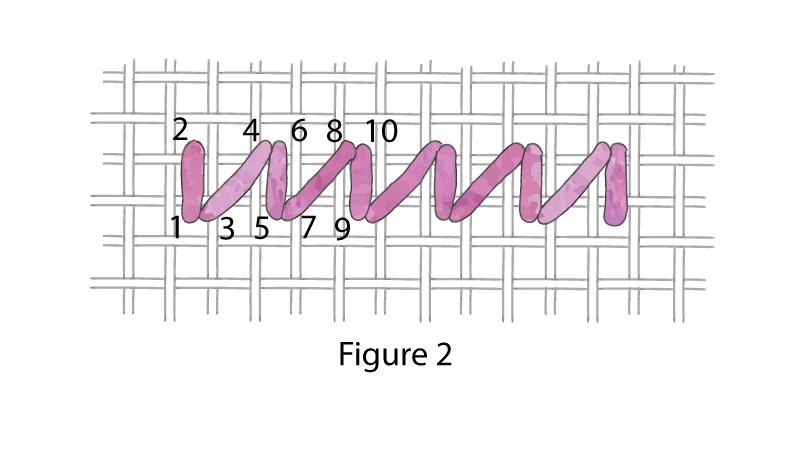
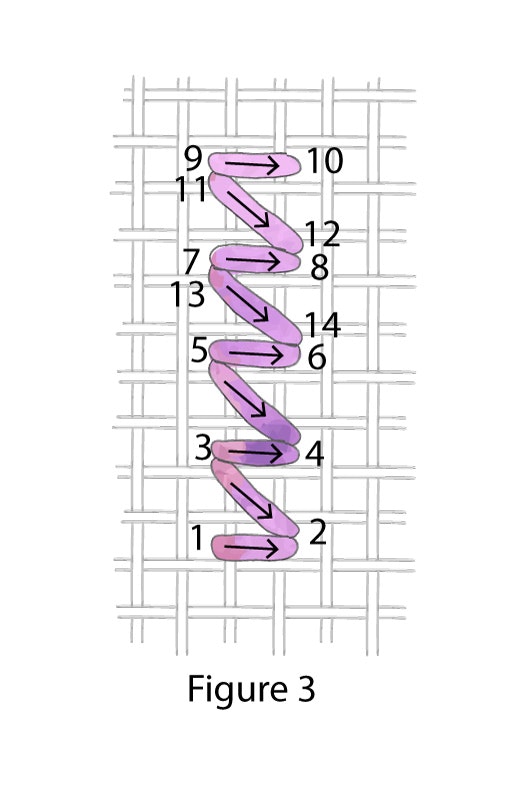
The barrier stitch, also known as the fence stitch, is also a two-journey stitch but worked from left to right for the first journey and then right to left for the return journey (Figures 4a and b). For the barrier stitch, the slant of the leg on the return journey is oriented from the lower right to the upper left. The reverse side of the barrier stitch is the Bosnia stitch!
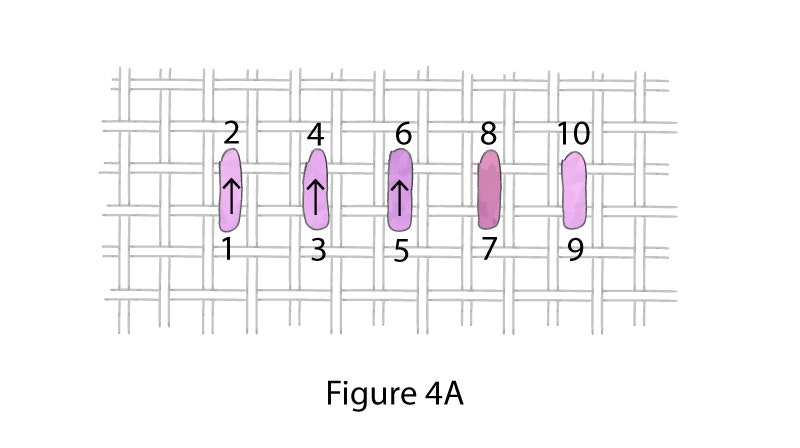
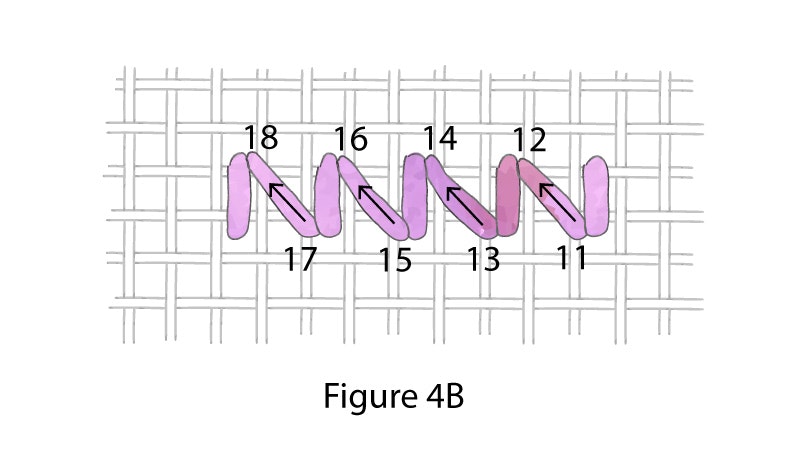
The Yugoslav border stitch and the zigzag Holbein stitch (Figure 1c) refer specifically to the Bosnia stitch only when they are worked in a single row or in multiple rows to produce a wide border but never as a filling stitch for a motif. The Bosnian filling stitch (Figure 5) may require compensating stitches to fill a motif entirely.
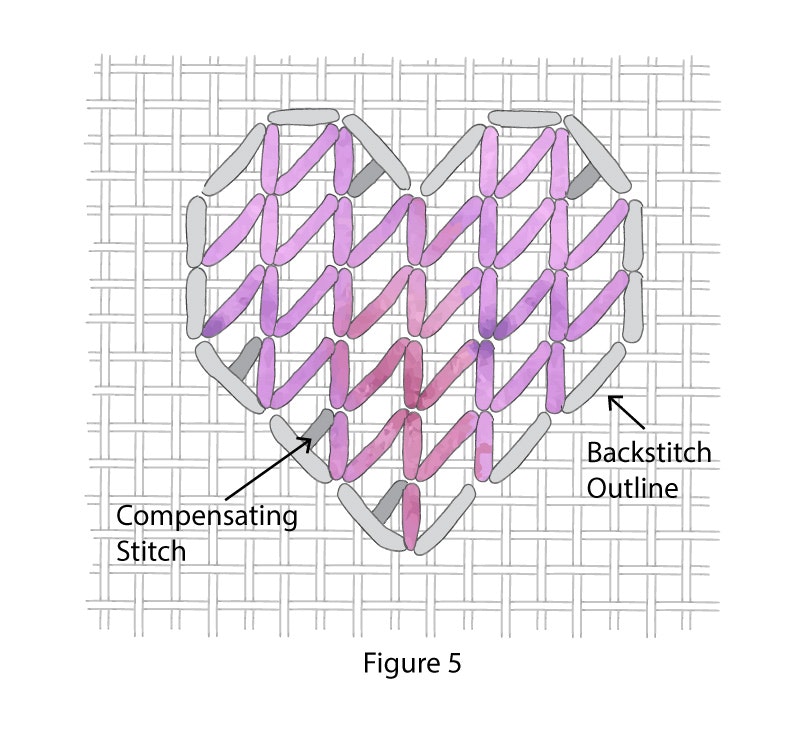
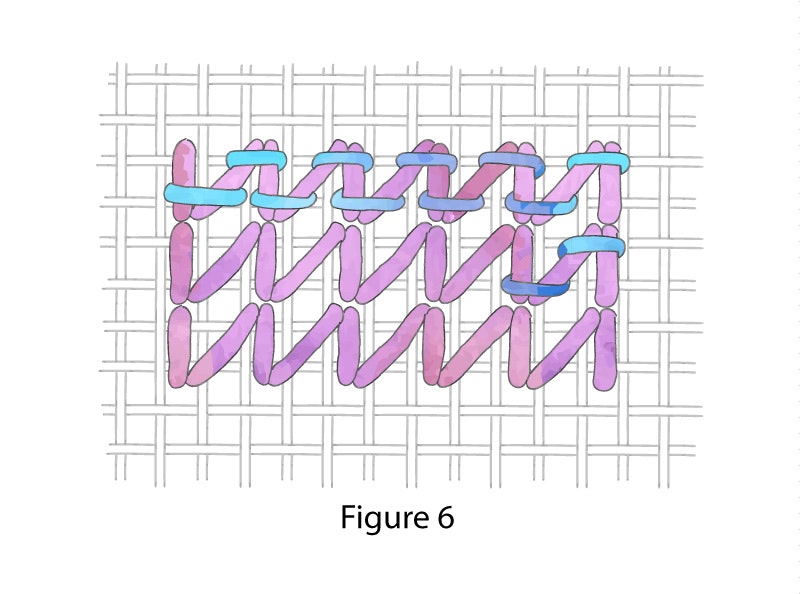
Just about any type of thread can be used for the Bosnia and barrier stitches. The size and type of thread or the number of thread strands used is dependent upon the size of the stitch, the thread count of the ground fabric, and the final appearance desired. Experiment with different threads: stranded cotton, silk or rayon floss, metallic or metallic blends, wool and wool blends, linen, silk ribbon, flower thread, or pearl cotton in solid, variegated, or overdyed colors. Two different thread types or colors can be used in the same line of stitching: one for the upright legs and another for the slanting legs. Different combinations of thread types and colors produce interesting, dynamic effects.
Both the Bosnia and barrier stitches have threaded variations (Bosnia, Figure 6). An additional thread is threaded (wound) around the top and bottom of the stitches of the basic stitch foundation, piercing the ground fabric only at the beginning and end of each row but not using the exact same holes as the foundation stitches (see * in Figure 6). The threading procedure can be worked from left to right (first row, Figure 6) or right to left (second row, Figure 6). Although cross-stitch is predominant, wide borders of the threaded Bosnia stitch were frequently used to decorate the regional attire of southeastern Europeans and continue to do so today. Traditionally, two different thread colors are used; the combinations of colors usually vary from village to village. The use of a favorite deep red for the foundation stitches with a blue interlacing thread for the threaded Bosnia stitch on a white linen or cotton background (plain or evenweave) is the most common combination. For special occasions, a metallic thread (gold or silver) is sometimes used for the threading, giving the garment an elegant sparkle. Innumerable combinations of thread types and colors can be used, but whatever the combination of threads used, be sure that the threading fiber does not entirely obscure the foundation stitches.
Both the Bosnia and barrier stitches can be used to couch down ribbon, braid, or cord to a background fabric by sliding the ribbon between the fabric and surface stitches (Figure 7). The stitching threads used should be thin in diameter or the number of strands few to keep the ribbon from being obscured, unless the Bosnia stitches are of sufficient size to warrant a thicker thread. Adjust the size of the stitches to accommodate the ribbon width.
—Deanna Hall West
We are thrilled to welcome Deanna Hall West back to our A Stitch in Time blog posts. View the entire series here. Enjoy! —Editor
Deanna Hall West is PieceWork’s needlework technical editor; previously, she was the editor of The Needleworker magazine. Featured Image: Scissors and needle case courtesy of Loene McIntyre. Photo by Joe Coca.
Illustrations by Ann Swanson.


